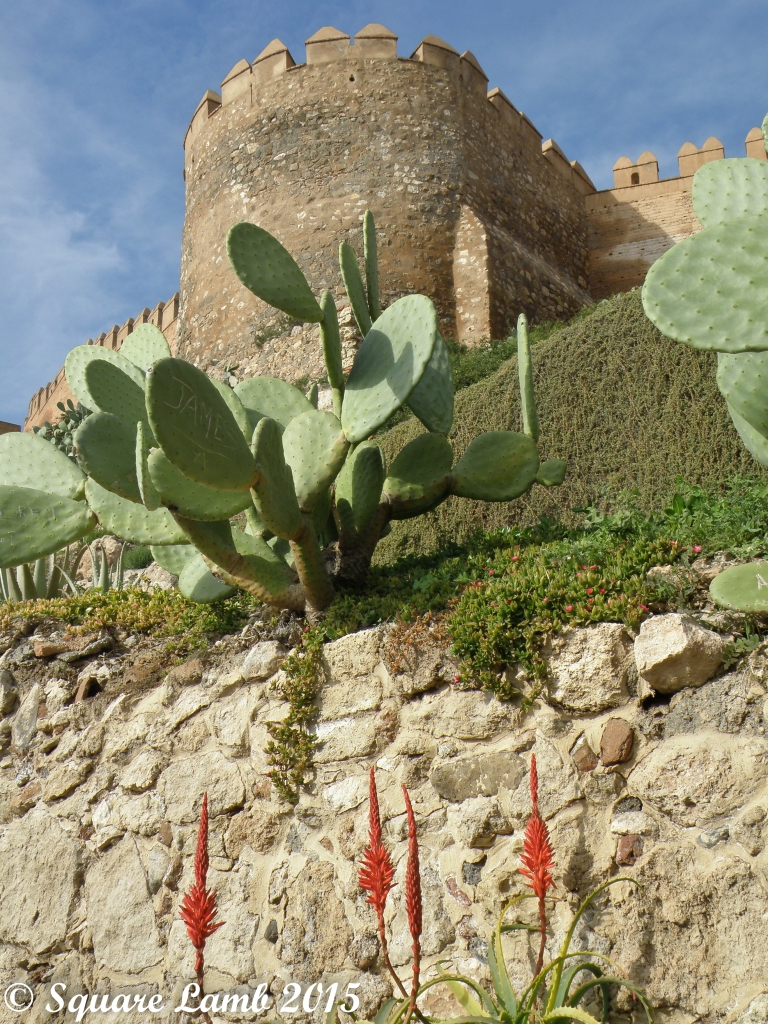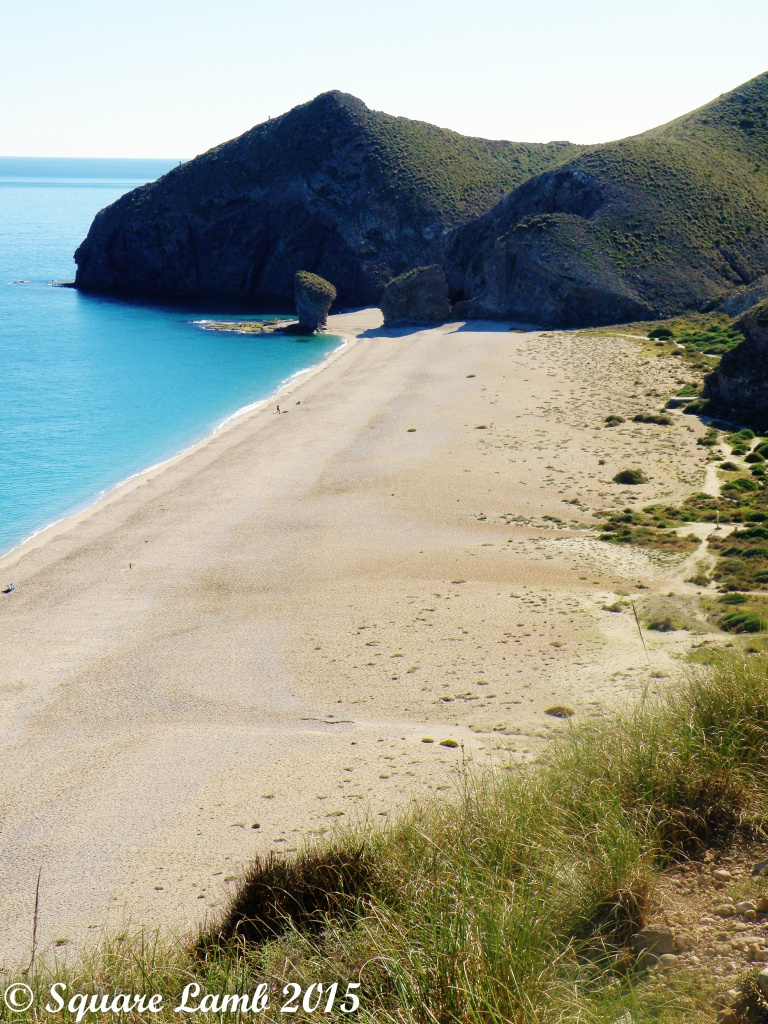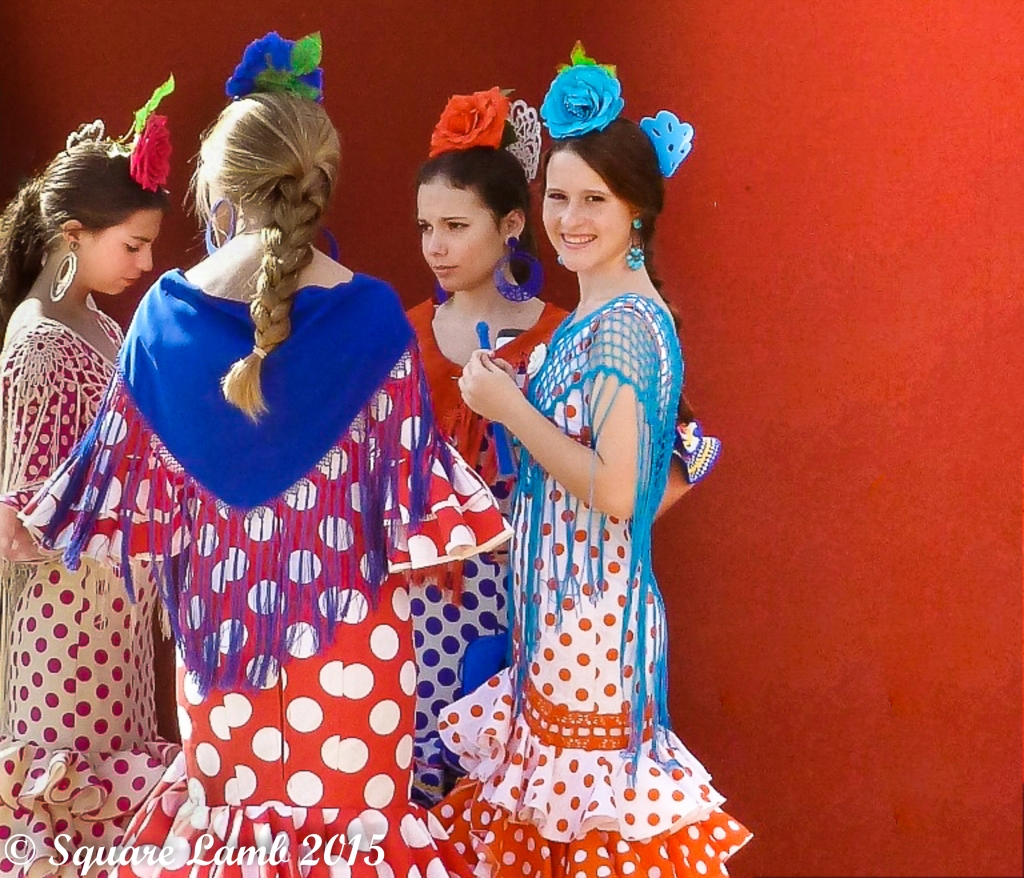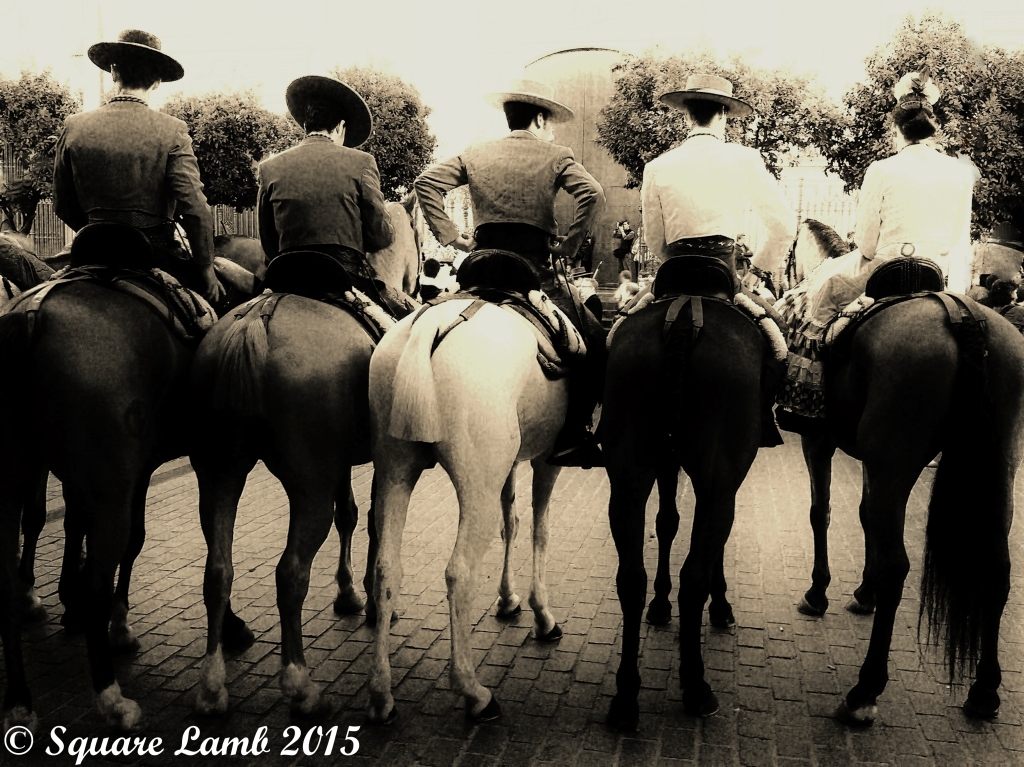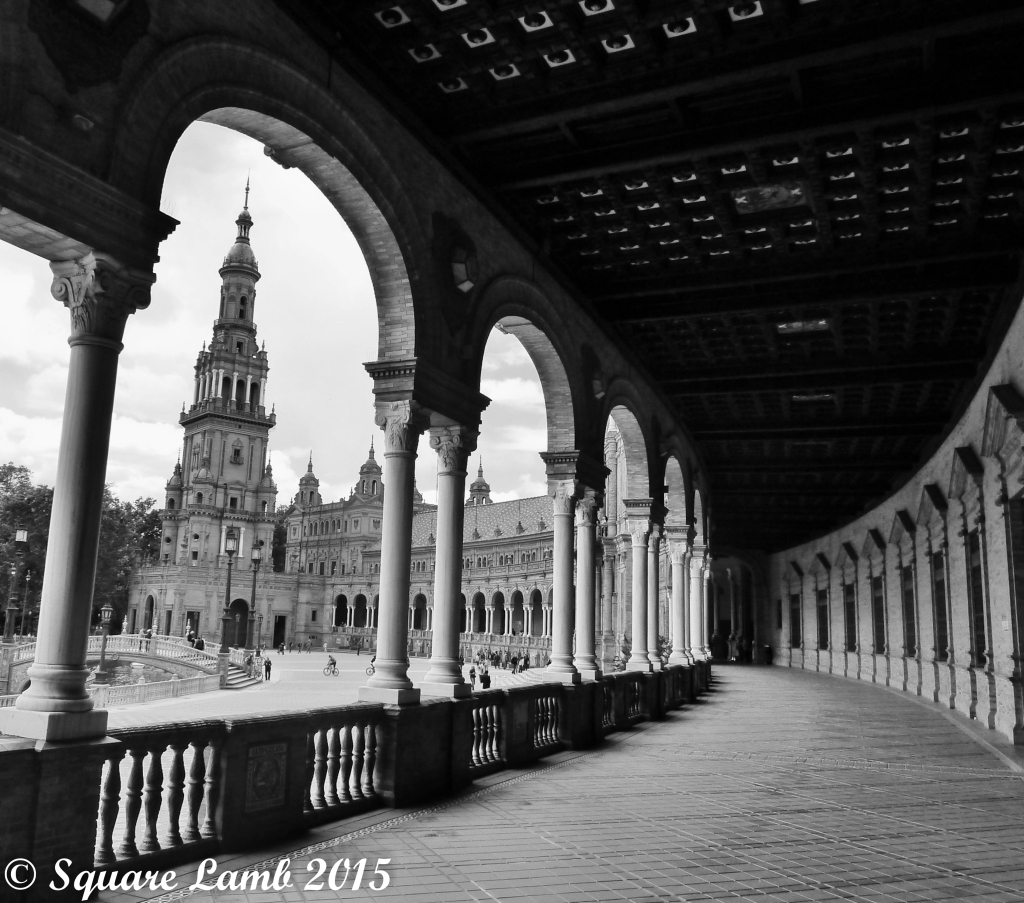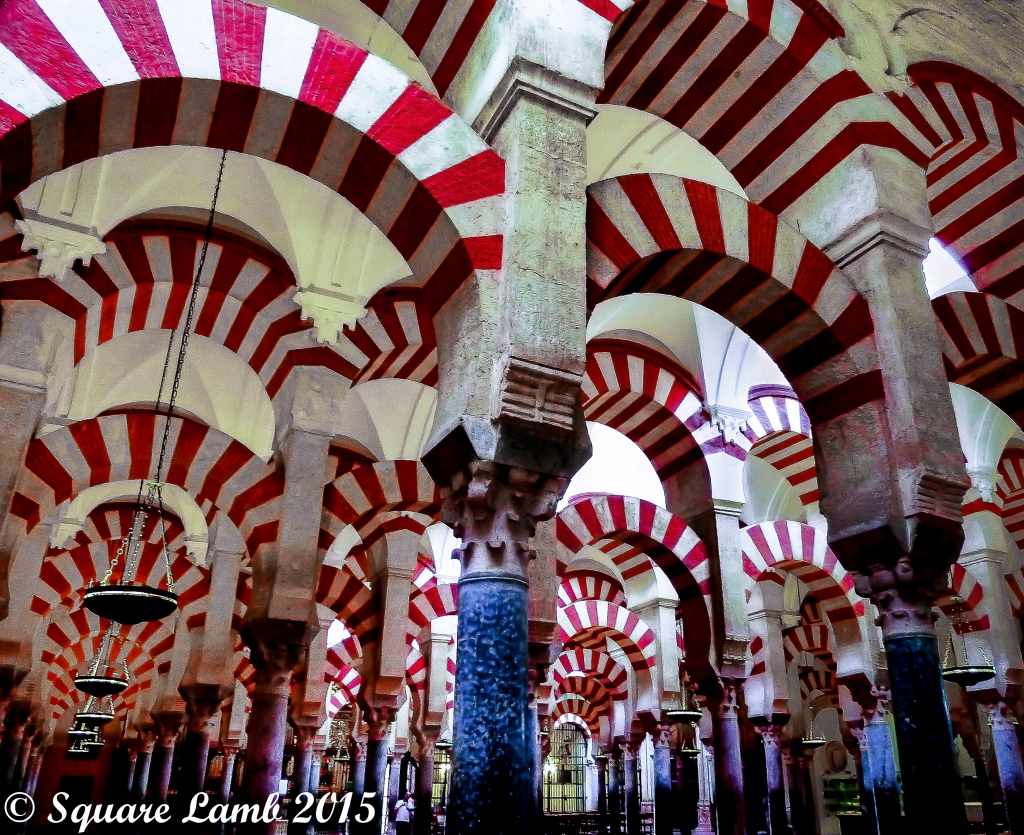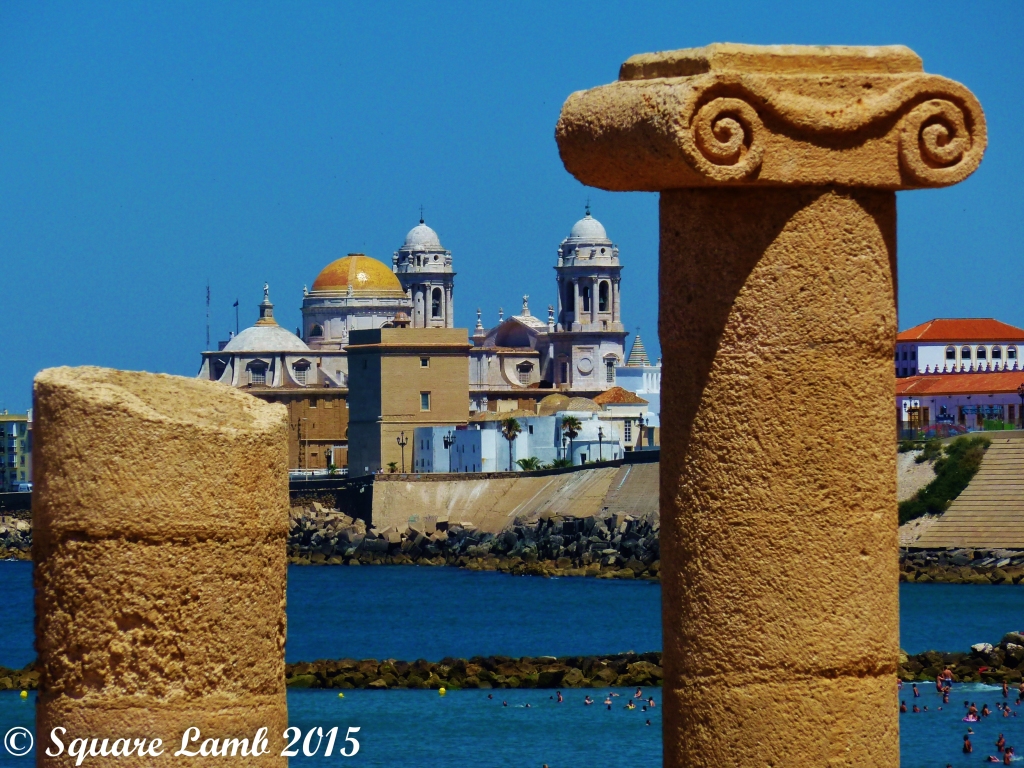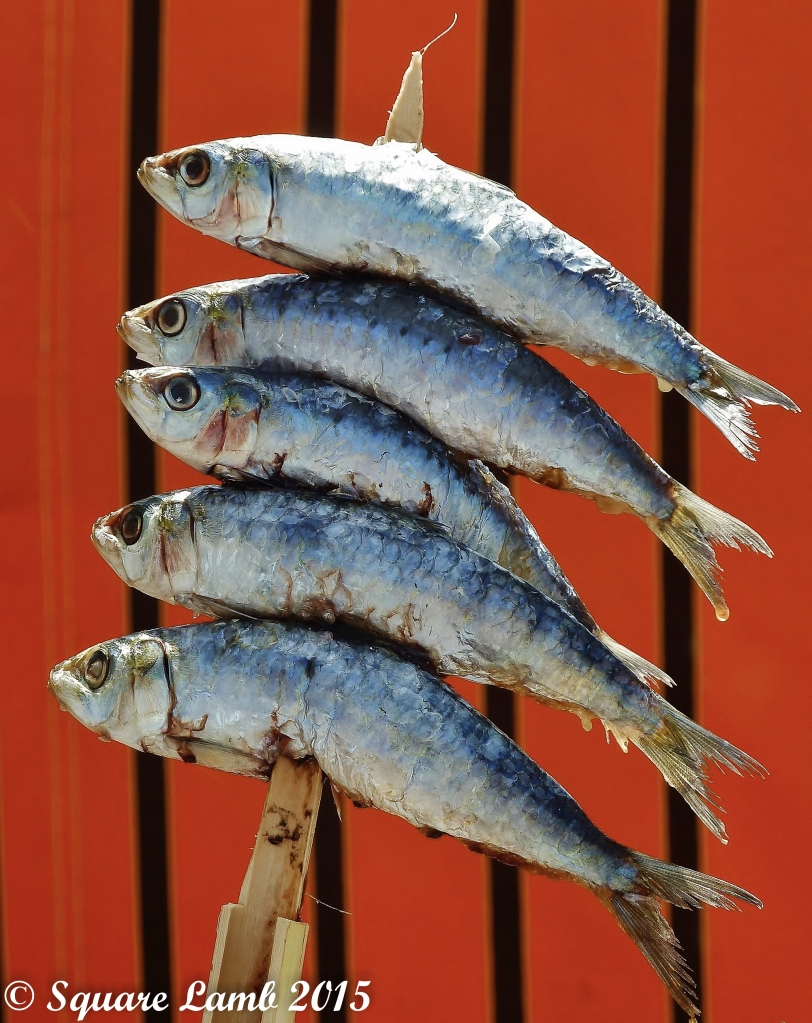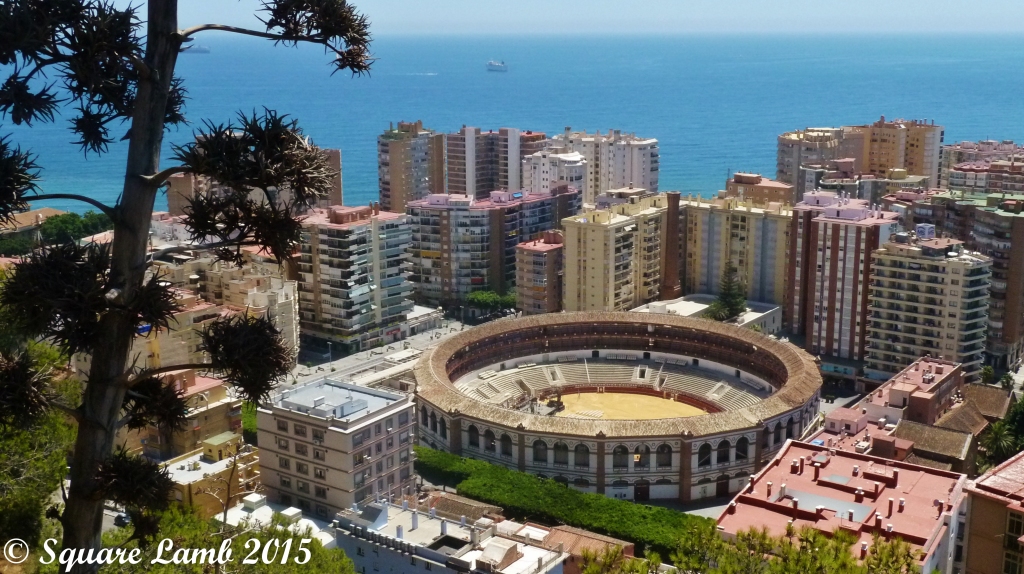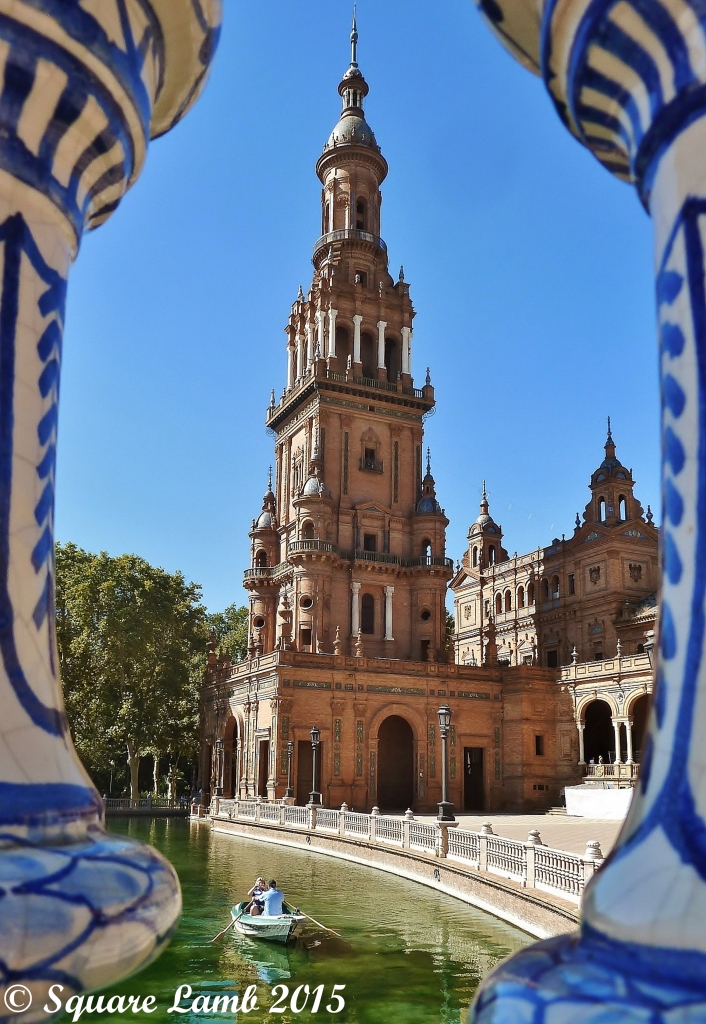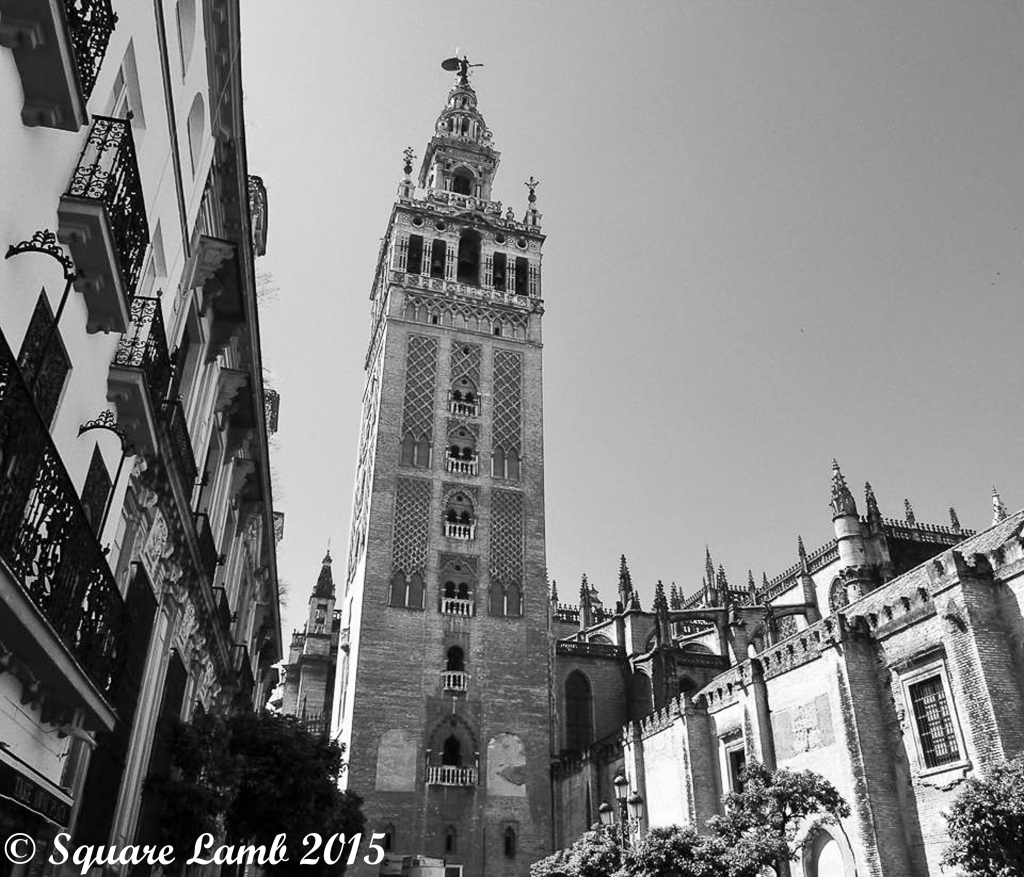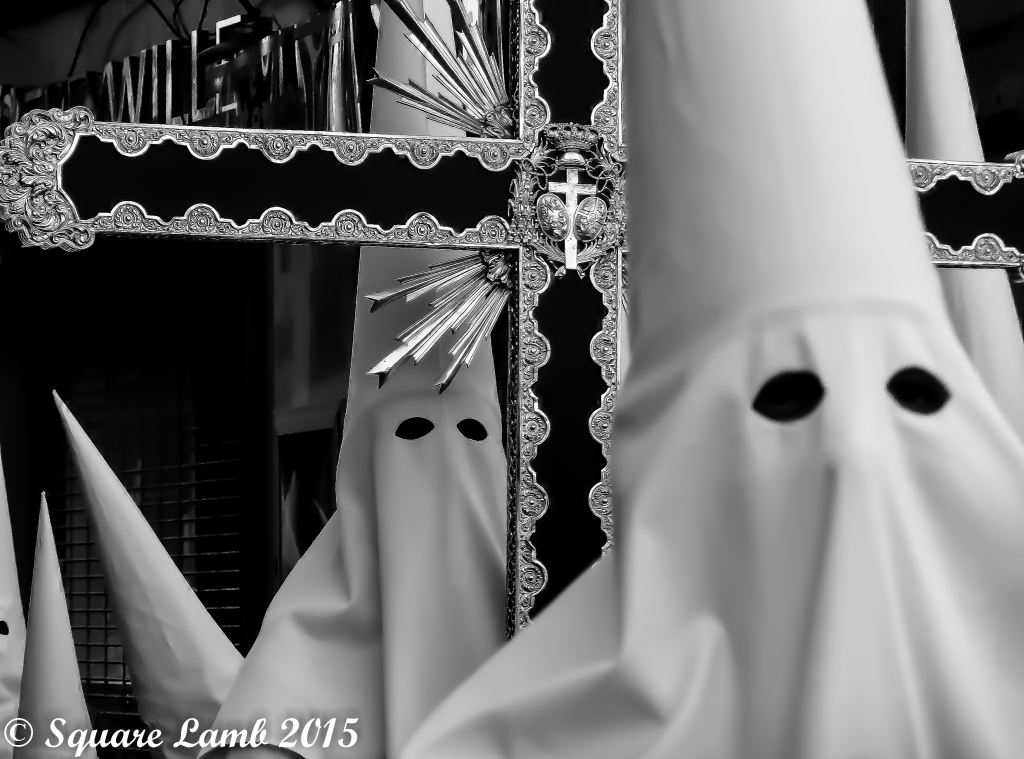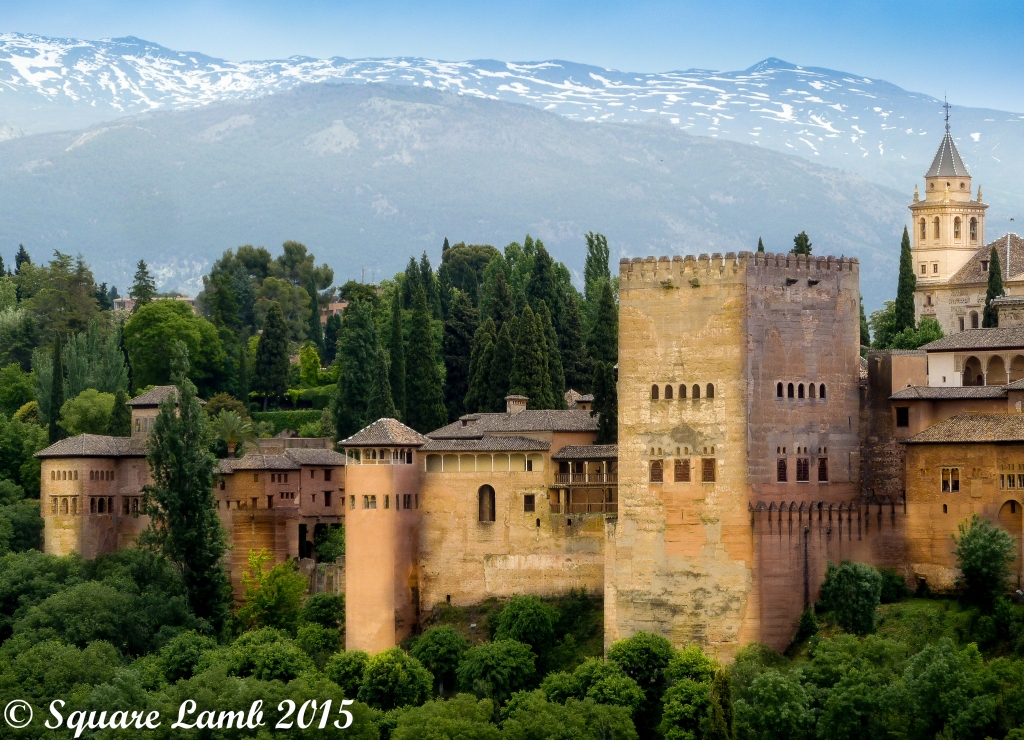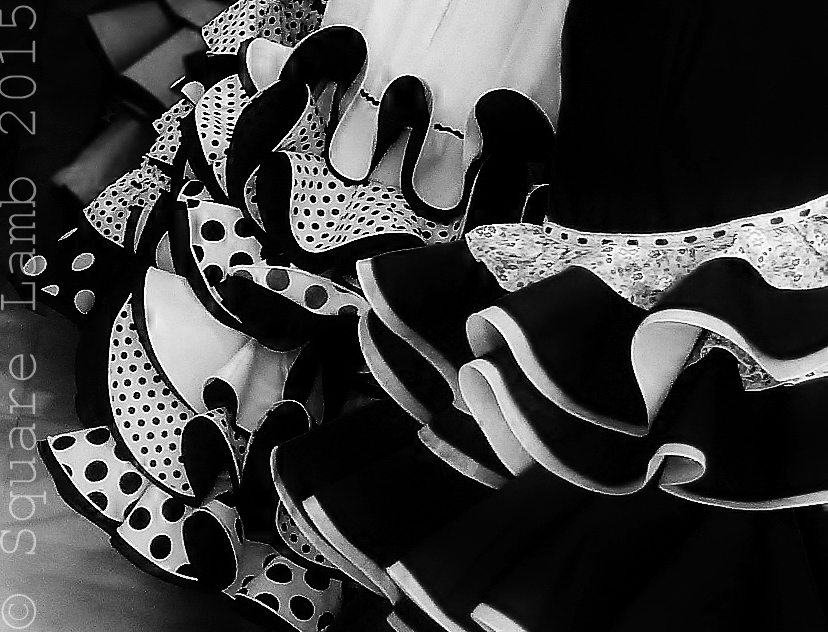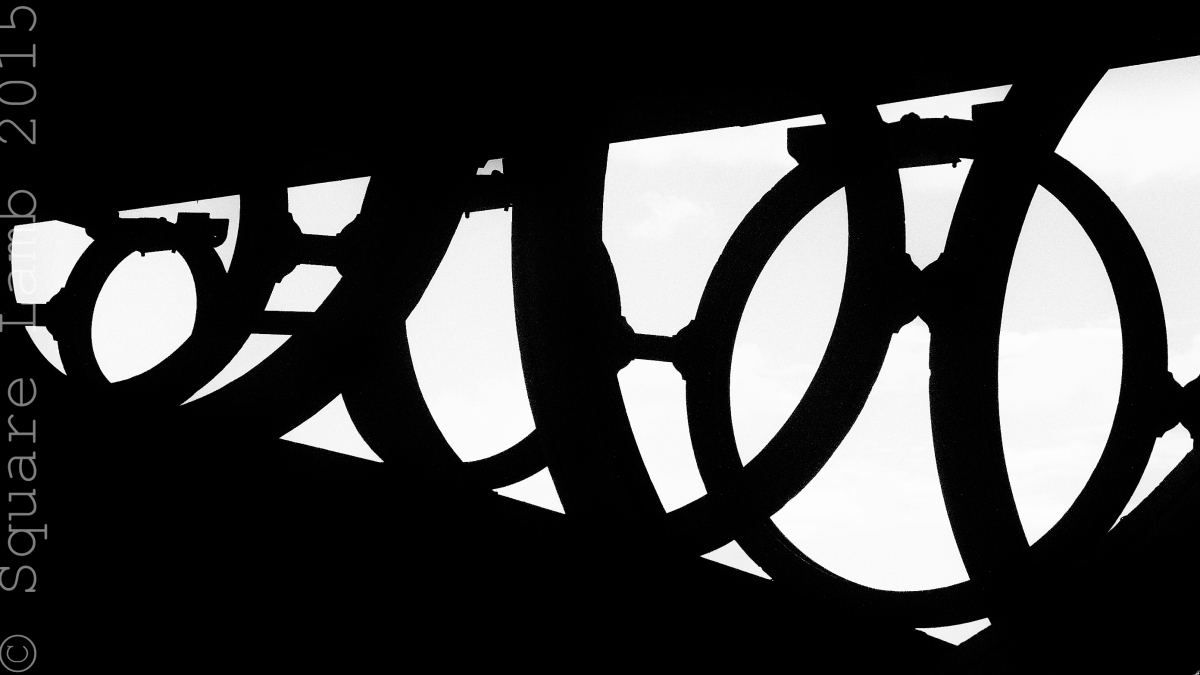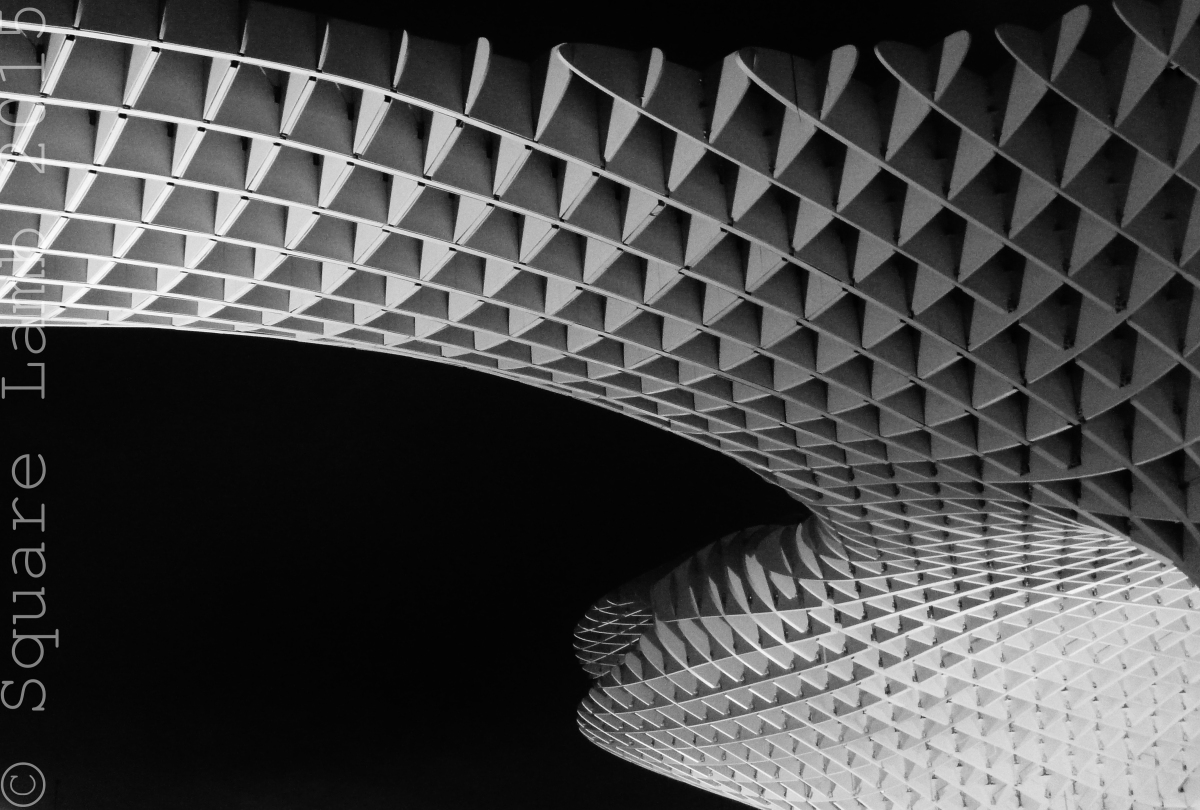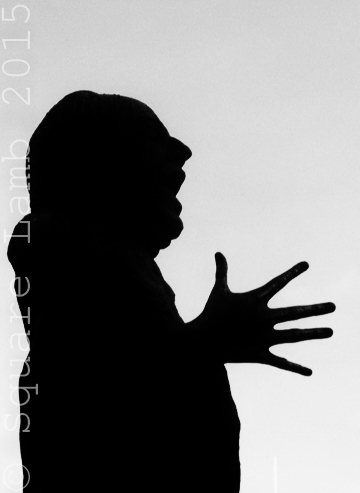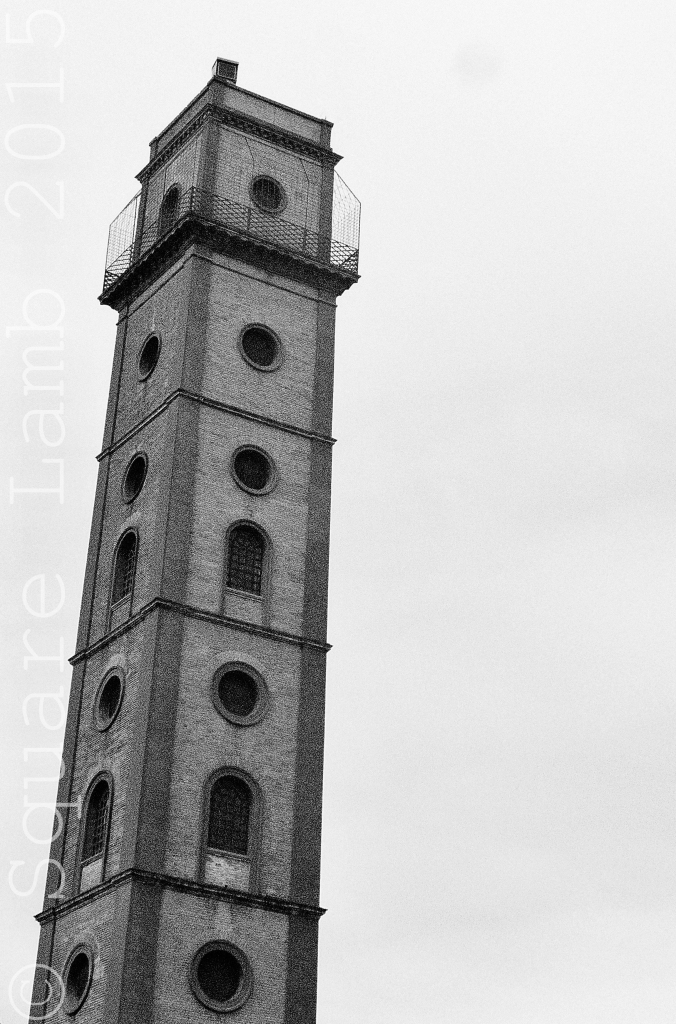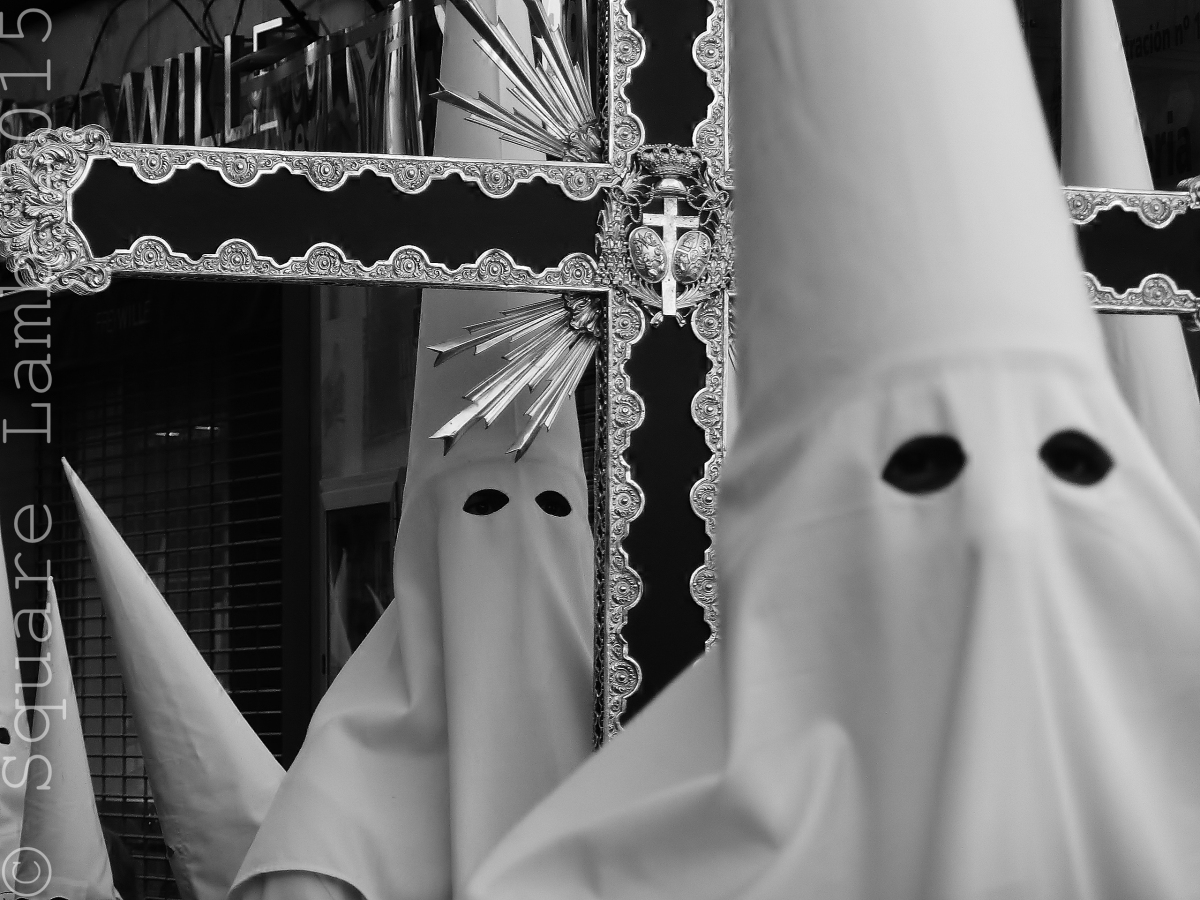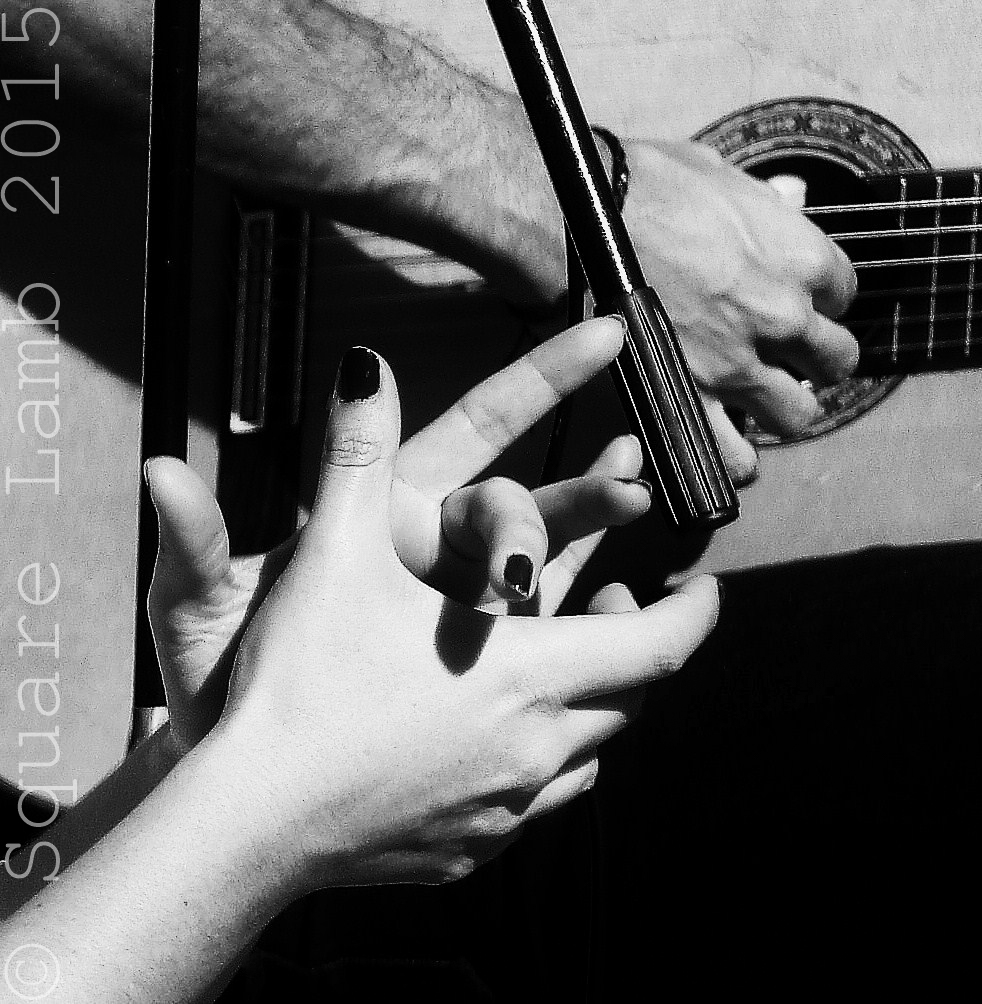No,it’s not a meeting of the Ku Klux Klan – it’s a traditional Easter procession in southern Spain.
Semana Santa is the most important event in Spain’s religious calendar and, as we know, the Spanish spare nothing when it comes to celebrating important events. Starting on Palm Sunday and continuing almost constantly until Easter morning, Nazarenos – the male and female participants in the processions – walk tirelessly through the streets for up to twelve hours at a time…the most devoted of them without shoes. There are approximately 70 confradias, or religious “brotherhoods”, in Seville alone, meaning literally thousands of cloaked and hooded figures processing through the city streets, usually accompanied by a wailing brass orchestra and a funereal beating drum. Add in the fact that each confradia wears a different-coloured set of robes and the sight is hugely impressive, if not a little intimidating. One of the most memorable processions takes place on the night of Holy Thursday when black-robed Nazarenos march silently and eerily through the dark.
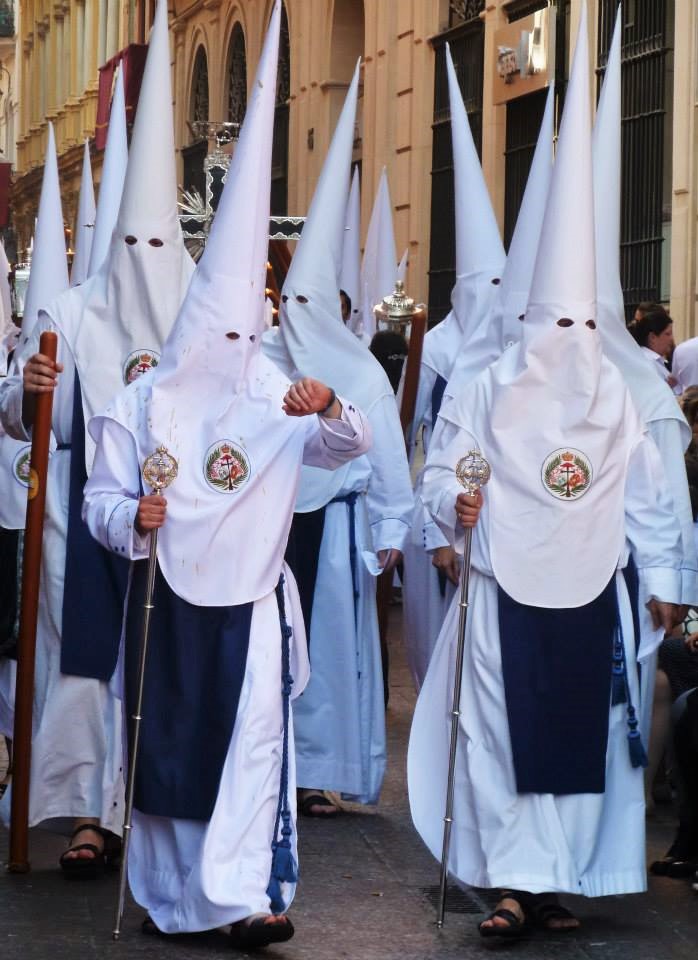
The biggest processions include re-enactments of the Stations of the Cross, a man dressed as Jesus and occasional public flagellation. Yep, they take it seriously here. One thing you will see in most processions is an icon or statue from inside the church being carried, pallbearer style, through the streets…although this has started to attract criticism in recent years as most of the statues are lavish affairs draped in gold which some people believe undermines the real meaning of Easter.
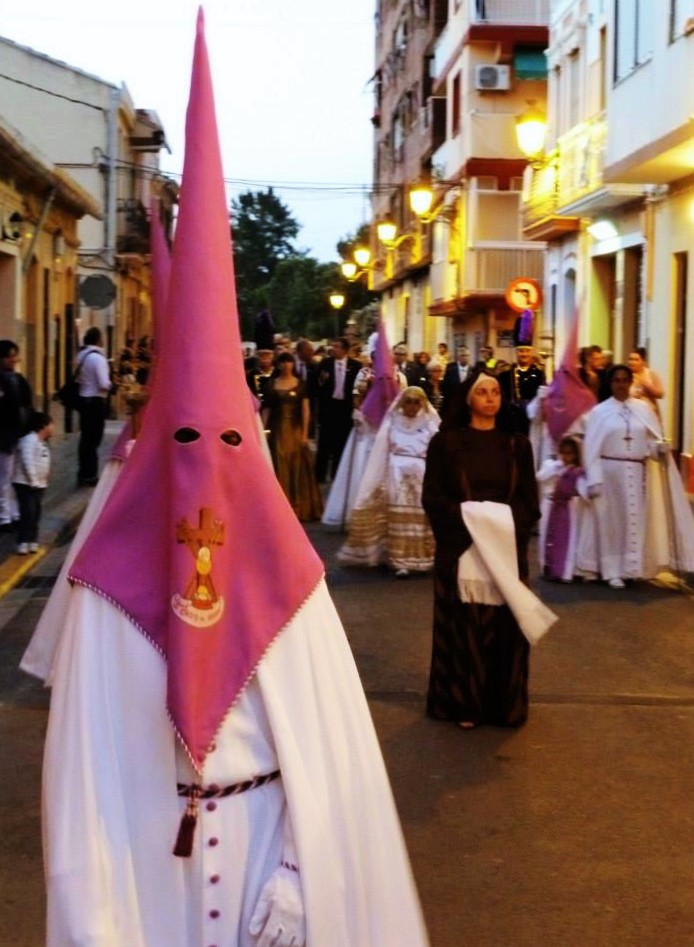
But what about those pointy KKK hoods? Well, no one seems quite sure why they opted for this particular design, except that the idea is to cover the face to symbolise shame at the sins committed in the past year. The conical shape is possibly there to denote a syphoning off of the sins towards heaven. One thing is certain, though – the Nazareno hoods pre-date the KKK by several centuries; it was the KKK who adopted the style and made it globally synonymous with delusions of race supremacy, which is in stark contrast to the original hoods’ intended meaning. On Easter morning the Nazerenos remove the hoods and stride through the streets, smiling and throwing flowers, to show that their sins have been forgiven.
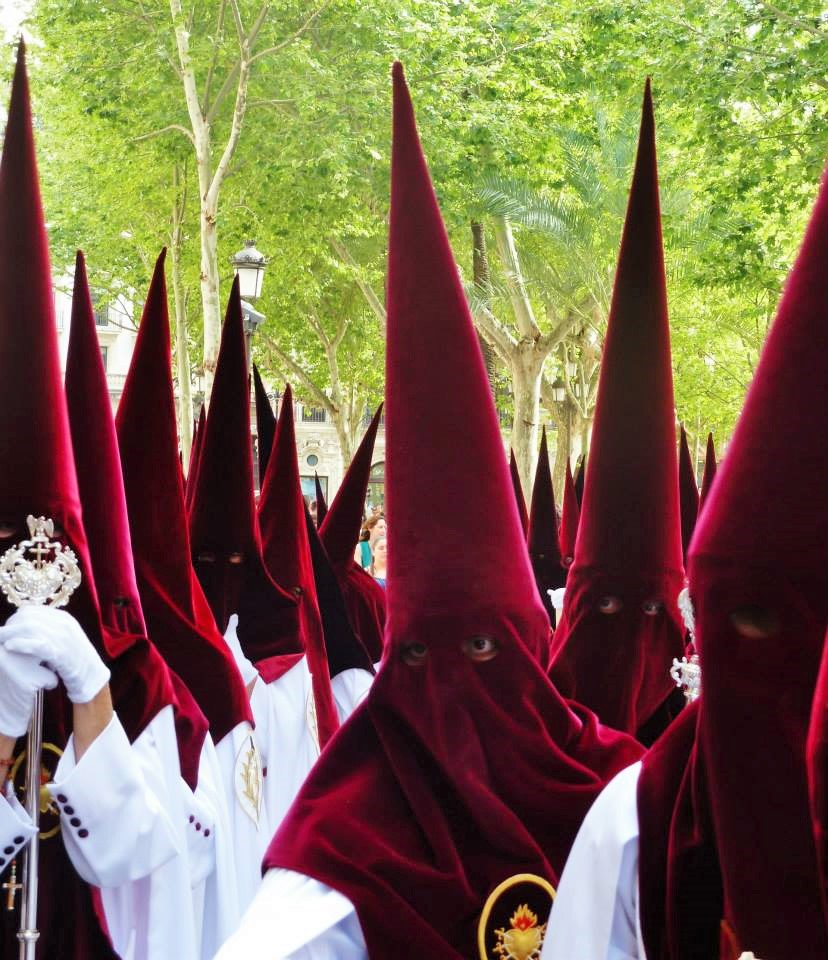
Semana Santa in Spain should be on everyone’s Bucket List – religious or not – as it’s a sight to behold in terms of sheer tradition, devotion, sense of occasion and, yes, bizarreness. Seville is the obvious destination for a Semana Santa break (most of these photos were taken in Seville) but for a slightly cheaper and less-crowded experience you can also witness it in most towns and villages south of Madrid, including Málaga and Granada. Valencia also has a good one. As for me, these days I’m quite content to sit back and just enjoy the chocolate.
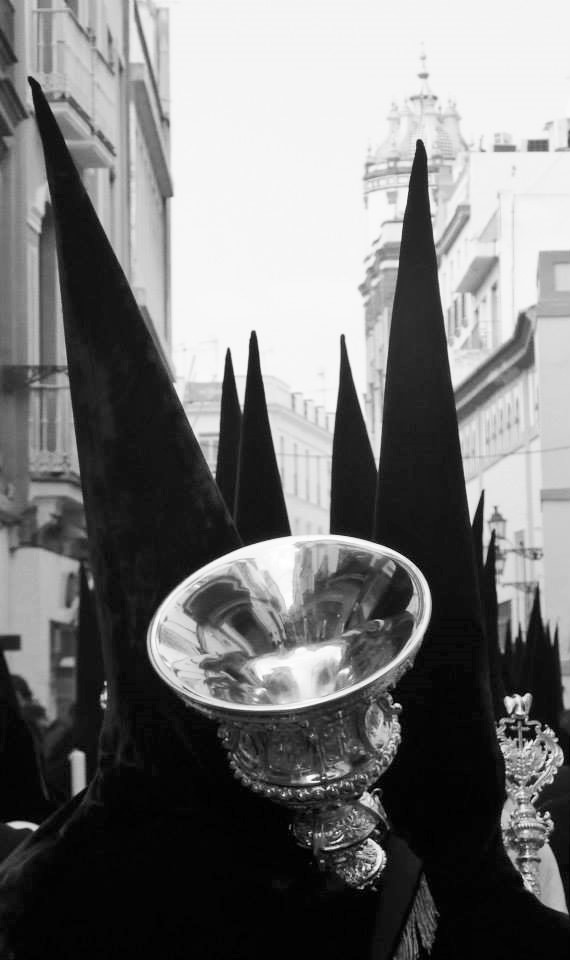
©Square Lamb 2016. All rights reserved.





















